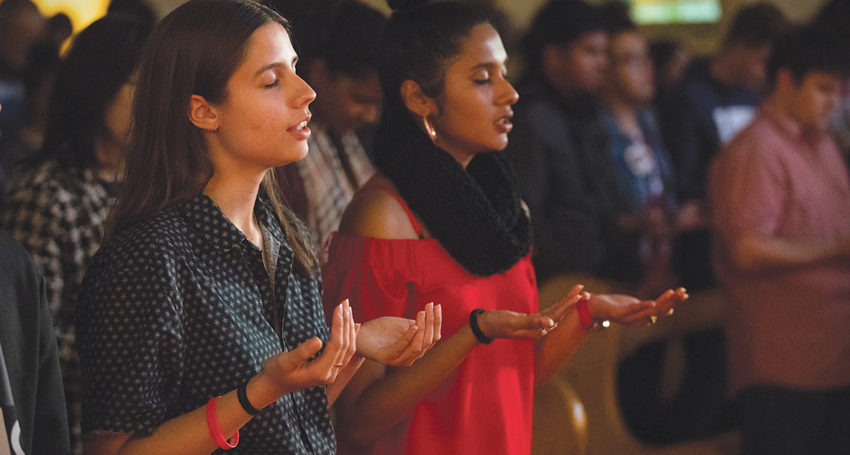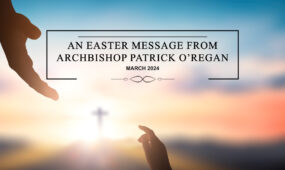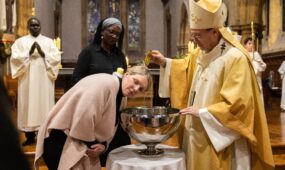Christ is truly present
Opinion
Jesus told his followers ‘where two or three are gathered in my name, there am I in the midst of them’ (Mt 18:20).

These reassuring words should ring in our ears as we gather each Sunday to celebrate Eucharist, or indeed to celebrate any of the Church’s liturgies. The bishops at the Second Vatican Council wanted Catholics to really understand this. In paragraph 7 of the Constitution on the Sacred Liturgy we read:
Christ is always present in his Church, especially in liturgical celebrations. He is present in the Mass both in the person of his minister … and most of all in the Eucharistic species. … He is present in his word since it is he himself who speaks when the holy scriptures are read in church. Lastly he is present when the Church prays or sings, for where two or three are gathered in my name, I am in the midst of them.
Advertisement
In the early Church, the community was very conscious of itself as the body of Christ (cf 1 Cor 12:27 – ‘You are the body of Christ and individually members of it.’) At baptism we ‘put on’ Christ, and are bound to him and the other baptised in a bond even stronger than blood. As the community of the baptised we are the body of Christ on earth. When we gather for liturgy, we, the members of the body, join with Christ, the head.
It is Christ’s presence in the Church, specified as the Church gathered for worship, that forms the basis for the possibility of all the other modes of Christ’s presence.
Many people may not be aware that it is only ‘after the people have gathered’ that Mass can begin. A third-century bishop, instructing other bishops, encouraged them to urge their flock to run to Sunday Eucharist, because if any one person was missing, the body of Christ would be incomplete. If only we had that same understanding of how important our presence is at Sunday Mass!
Christ is also present when the Word of God is proclaimed. It might be the voice of the reader that we hear, but it is truly Christ himself who speaks to us. This is why, at the end of the First and Second Readings, the reader acclaims ‘the Word of the Lord’ in the same way that the Communion minister acclaims ‘the body of Christ’ (or ‘the blood of Christ’) when distributing Communion. In the first instance we respond, ‘thanks be to God’ in gratitude for the nourishment that Christ in his Word brings to us, and in the second, we respond with a heartfelt ‘Amen’, acknowledging the presence of Christ in the consecrated bread and wine and in us, the gathered community of the baptised. How important, then, that we listen attentively with an open heart as the Word of God is proclaimed, and join in the singing of the Psalm and the Alleluia.
Christ is present too in the person of the priest, whom we could describe as the ‘tongue’ of the assembly, sometimes speaking and acting on behalf of Christ, its head, sometimes speaking and acting on behalf of its members, the baptised faithful. Throughout the Eucharistic Prayer the priest always says ‘we’, never ‘I’. He might be the one speaking the words aloud, but they are the words of the entire body of Christ, head and members.
Advertisement
Finally, Christ is present in the Eucharistic elements. This is probably the mode of Christ’s presence with which we are most familiar. Indeed, we traditionally speak of the ‘real presence’ when referring to the sacramental species. In the Eucharistic Prayer the gifts of bread and wine are transformed by the Holy Spirit into the body and blood of Christ and become the real food of the body of Christ, the Church.
Let the fact that Christ is TRULY present in the assembly, the Word of God proclaimed, the priest and the eucharistic elements, move us to ‘run to the Eucharist’ to truly encounter the love of God made present in Christ.
Jenny O’Brien is liturgy educator in the Archbishop’s Office for Worship and Diocesan Events







Comments
Show comments Hide comments